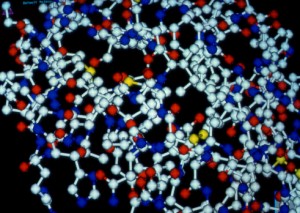Matching ABO antigens for RBC transfusions is time consuming and limits inventory. Research now shows how this barrier could be eliminated by generating universal blood. Type O RBCs lack the terminal antigenic sugar.Removal of the terminal sugars of the A- and B-antigens yield O-type cells.
A- and B-antigens are linked to the glycan via type 1, type 2, type 3 or type 4 chains. In order to make A- and B-cells non-antigenic like type-O cells, researchers started with a glycoside hydrolase from Streptococcus pneumonia that cleaves type 2 linkages on both A-and B-antigens. After screening libraries of mutants from 5 rounds of directed mutagenesis, they identified a mutant with 170-fold improved activity to cleave type 1 chains while retaining wild-type cleavage of type 2 linkages. Since this enzyme cleaves the entire terminal trisaccharide of the A- and B-antigens, additional research is needed to confirm safety of the cells. Further enzyme mutagenesis will be necessary to broaden cleavage of linkages to type 3 and 4; however, this bodes well for the potential to engineer an enzyme that can convert A- and B-cells to O-cells.
Reference


Very good work.. ! Please keep it up